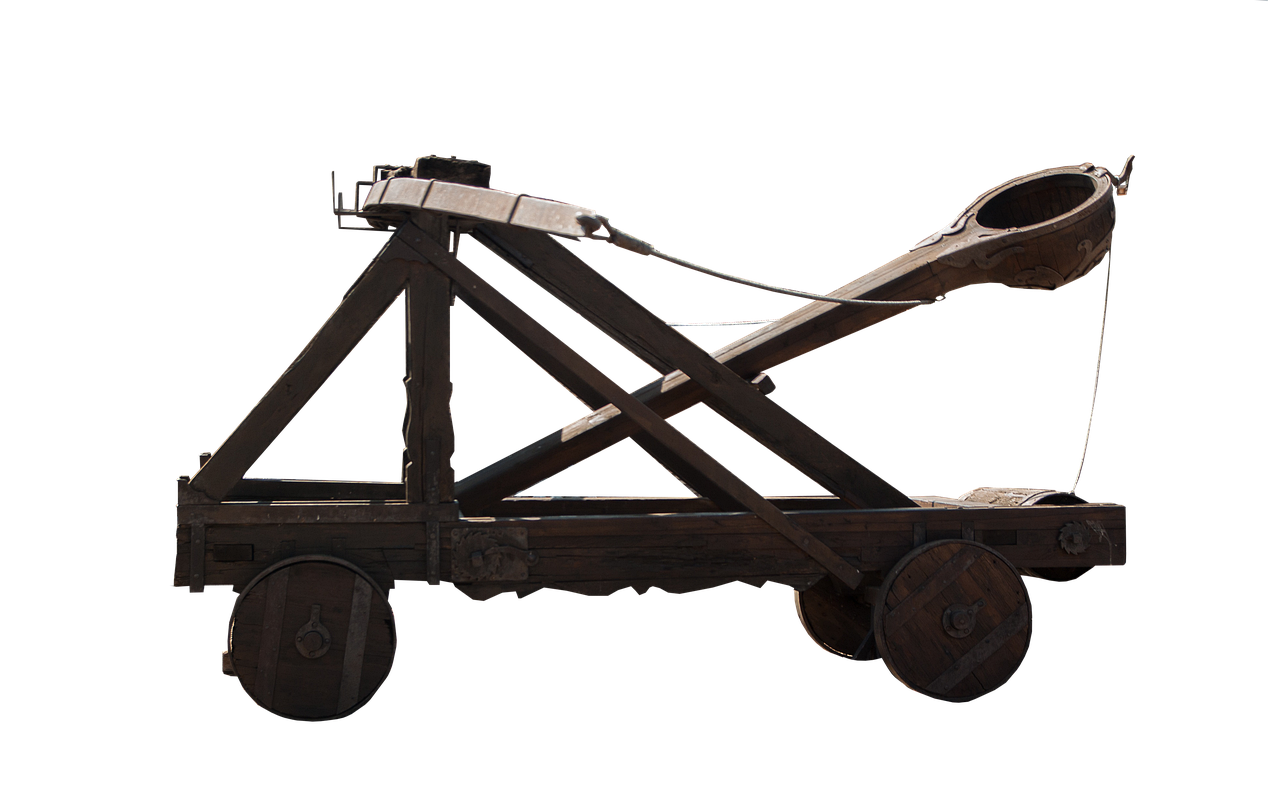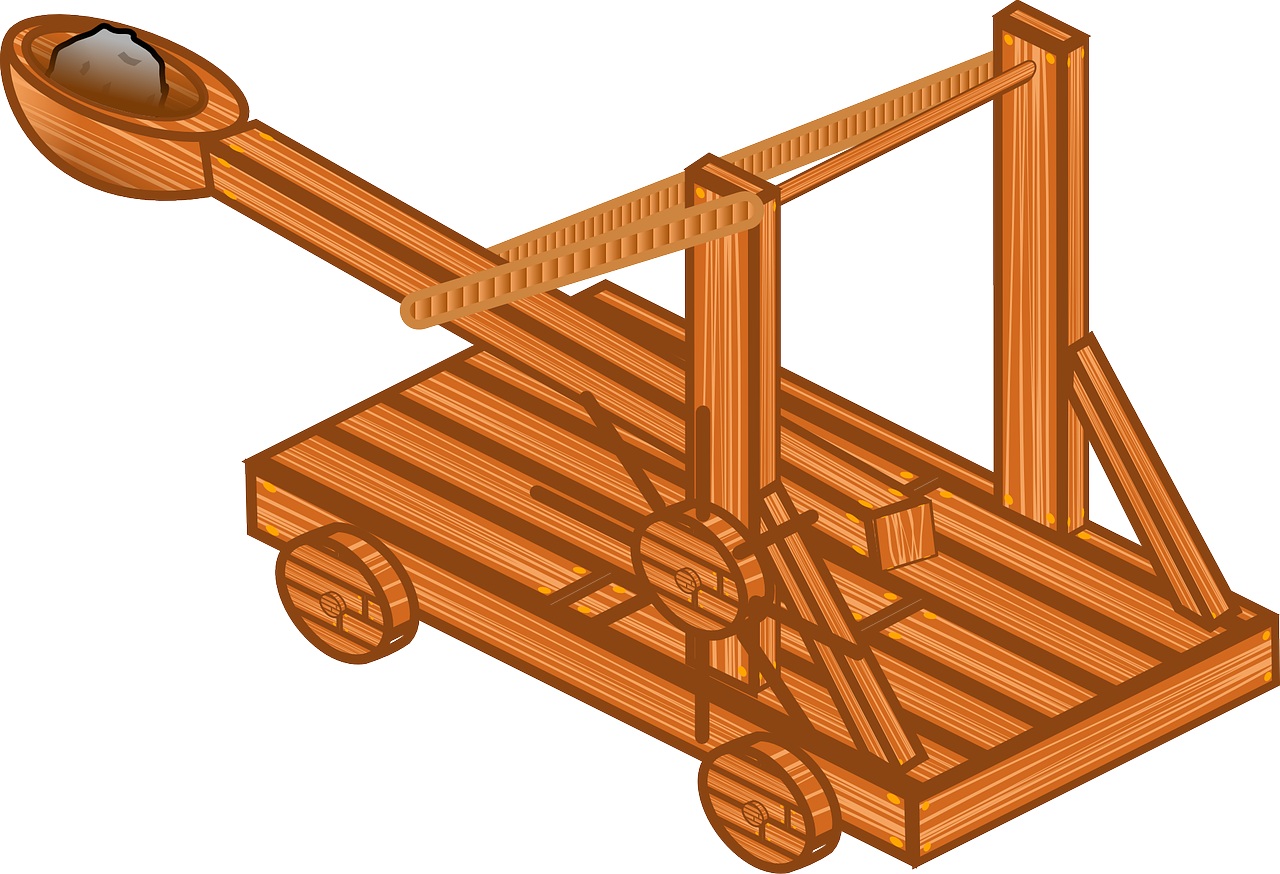Welcome back to our historical journey! Today, we’re turning our attention to the incredible world of medieval warfare, where towering stone walls, armored knights, and strategic battle plans reigned supreme. Among the many weapons and war machines used during this time, catapults held a special place in the hearts of military strategists.
In this blog post, we’ll delve into the fascinating realm of medieval catapults, exploring their origin, their various types, and most importantly, how they were skillfully employed in battles. From launching flaming projectiles to breaking through fortifications, these ingenious contraptions played a vital role in shaping the outcome of numerous conflicts. So grab your virtual armor and embark with us on this captivating journey back to medieval times!

How Catapults Were Used in Medieval Times?
The medieval period was a time of innovation and warfare, and one of the most fascinating inventions from this era was the catapult. These impressive machines were used by armies to launch projectiles over long distances, wreaking havoc on enemy forces and fortifications. Let’s take a closer look at how catapults were utilized in medieval times.
Siege Warfare: Breaking Down Castle Walls
One of the main uses of catapults in medieval times was in siege warfare. Castles and fortresses were formidable structures designed to withstand attacks, but a well-placed catapult could change the course of a siege. These mighty machines were used to launch large rocks, flaming balls, and even diseased animals over castle walls, causing chaos and forcing the defenders to weaken their positions.
Psychological Warfare: Spreading Fear and Panic
Catapults were not just used for physical destruction, but also for psychological warfare. The sight of a massive catapult being wheeled into position and the sound of it launching a projectile could strike fear into the hearts of enemy troops. The anticipation of an imminent attack from these behemoths could demoralize defenders and weaken their resolve. In this way, catapults played a crucial role in spreading fear and panic among the enemy ranks.
Precision Strike: Taking Out Specific Targets
While catapults were known for their brute force, they also had the capacity for precision strikes. Skilled catapult operators could aim their projectiles at specific targets within a castle or fortress, such as towers, gates, or even individual soldiers. By selectively targeting key areas, catapults could weaken the defenses and create opportunities for a successful assault.
Naval Warfare: Catapults onboard Ships
Catapults were not limited to land warfare in medieval times. They were also used in naval warfare, particularly on ships. These ship-mounted catapults, known as “ship-shooting engines,” were used to launch fireballs, rocks, or other projectiles at enemy vessels. The aim was to cause damage to the enemy ship’s sails, rigging, and hull, making them vulnerable to boarding or sinking.
Artillery Improvements: Evolution of Catapults
Throughout the medieval period, catapults evolved and improved in design and effectiveness. Different types of catapults were developed, including trebuchets, mangonels, and ballistae, each with its own unique mechanisms and capabilities. These advancements allowed for more accurate targeting, increased range, and greater projectile velocity, making catapults even more deadly on the battlefield.
Catapults were remarkable machines that played a significant role in medieval warfare. Whether used to break down castle walls, spread fear and panic, deliver precise strikes, engage in naval combat, or through continuous artillery improvements, catapults were indispensable in shaping the outcome of battles. So, the next time you hear the term “catapult,” remember the ingenious and sometimes humorous ways these powerful machines were employed in medieval times.

FAQ: How Catapults Were Used in Medieval Times?
Medieval warfare is filled with fascinating weapons and tactics, and one of the most iconic and powerful weapons of that era was the catapult. In this FAQ-style article, we will explore the world of medieval catapults, including how they were used, their different types, and why the trebuchet reigned supreme. So, get ready to catapult yourself into the exciting world of medieval warfare!
How Does a Trebuchet Release
The trebuchet, a mighty siege weapon, releases its projectile with a brilliant display of physics. This mighty machine works by storing potential energy in its throwing arm. Once the arm is released, the energy is swiftly transferred to the projectile, propelling it towards its target with incredible force and accuracy. It’s gravity-powered mayhem at its finest!
What Are Medieval Catapults
Ah, the medieval catapults! These magnificent contraptions were powerful war machines used during the Middle Ages to hurl all sorts of projectiles at the enemy. They came in various shapes and sizes, such as the trebuchet, mangonel, and ballista. These catapults were the medieval equivalent of long-range artillery, terrifying the enemy and wreaking havoc on fortifications.
What Were Medieval Weapons
Medieval warfare was no playground, my friend. It was a world full of awe-inspiring weapons. From swords and axes to bows and arrows, medieval arsenal was a sight to behold. Knights in shining armor jousting with lances, crossbowmen taking aim with deadly precision, and siege weapons like catapults tearing down castle walls – it was an era where might made right!
What Is the Most Common Type of Catapult Used
Among the various types of medieval catapults, the trebuchet stood tall as the crowd favorite. With its ability to launch massive projectiles and its unrivaled range and accuracy, the trebuchet was the weapon of choice for empires and kingdoms alike. It could reduce fortresses to rubble and strike fear into the hearts of even the bravest warriors. It was truly a force to be reckoned with!
How Catapults Were Used in Medieval Times
When it came to medieval warfare, catapults played a crucial role. These mighty machines were used primarily for two purposes: siege warfare and creating chaos on the battlefield. During sieges, catapults were used to launch massive stones, flaming projectiles, and even diseased animals over castle walls, demoralizing the defenders and weakening their fortifications. On the open battlefield, catapults were employed to disrupt enemy formations, raining down destruction and sowing panic among their ranks. Talk about a medieval mic drop!
Why the Trebuchet is Superior
Ah, the trebuchet, the undisputed king of catapults! Its superiority stems from various factors. Unlike other catapults, the trebuchet’s long throwing arm gave it greater leverage and power, enabling it to launch heavier projectiles over longer distances. Its accuracy was also unmatched, thanks to the meticulous calculations and engineering behind its construction. Above all, the awe-inspiring sight of a trebuchet in action could crush the spirit of any adversary, making it a true weapon of intimidation.
Why Was the Trebuchet Made
The trebuchet was born out of a desire for medieval engineers to create a weapon that could outperform other siege engines. It was a testament to human ingenuity and the unyielding determination to conquer the enemy. The trebuchet’s massive size and complexity were surpassed only by its exceptional destructive power. With its creation, the world of medieval warfare reached new heights of devastation!
How Was a Trebuchet Used in Battle
In the heat of battle, a trebuchet was a sight to behold. As enemy forces clashed, the trebuchet crew tirelessly loaded rocks, debris, or even barrels of burning pitch onto its throwing arm. With a swift release, the projectile would soar through the air, crashing into enemy ranks, creating confusion and havoc. Whether pounding castle walls or delivering crushing blows to enemy formations, the trebuchet was a game-changer on the battlefield.
Did Vikings Use Trebuchets
Ah, the fierce Vikings! While they were known for their maritime prowess and ferocity in battle, trebuchets were not their weapon of choice. The Vikings were more inclined towards their trusty longships and hand-to-hand combat. It’s safe to say that they preferred up-close-and-personal encounters rather than lobbing projectiles from a distance. Leave it to the Vikings to bring an axe to a catapult fight!
What Does Trebuchet Mean
The word “trebuchet” hails from the Old French word “trebuchier,” meaning “to overthrow.” Quite fitting, isn’t it? And indeed, overthrowing fortifications was the trebuchet’s specialty. This medieval war machine used leverage and counterweights to overthrow the enemy’s defenses, both physically and mentally. If you were lucky enough to witness a trebuchet in action, the term “overwhelming force” would forever be etched in your memory.
What Are the Main Parts of a Catapult
A catapult, no matter its type, consists of several essential parts that work together to unleash devastation upon the battlefield. The main components include the throwing arm, upright frame, sling, counterweight system, and the base or foundation. Together, these components form a mechanical marvel capable of launching destruction with breathtaking accuracy and power.
How Much Does It Cost to Build a Trebuchet
Ah, a trebuchet, the medieval weapon of mass destruction with an equally mighty price tag. Building a trebuchet is no small feat, my friend. The cost can vary depending on the size, materials used, and complexity of the design. From procuring sturdy timber and heavy counterweights to assembling the intricate mechanisms, the price can rack up faster than a charging knight on horseback. But, hey, when it’s time to conquer a castle or defend your kingdom, who can put a price on victory?
And there you have it, brave readers – a comprehensive FAQ-style subsection that catapults you into the fascinating world of medieval warfare! We’ve explored the trebuchet’s release mechanism, its significance in medieval times, and its impact on battles and sieges. So, the next time you imagine yourself commanding a trebuchet, remember the power, the might, and the legendary tales this catapult unleashed upon the medieval world. Stay catapultastic!
